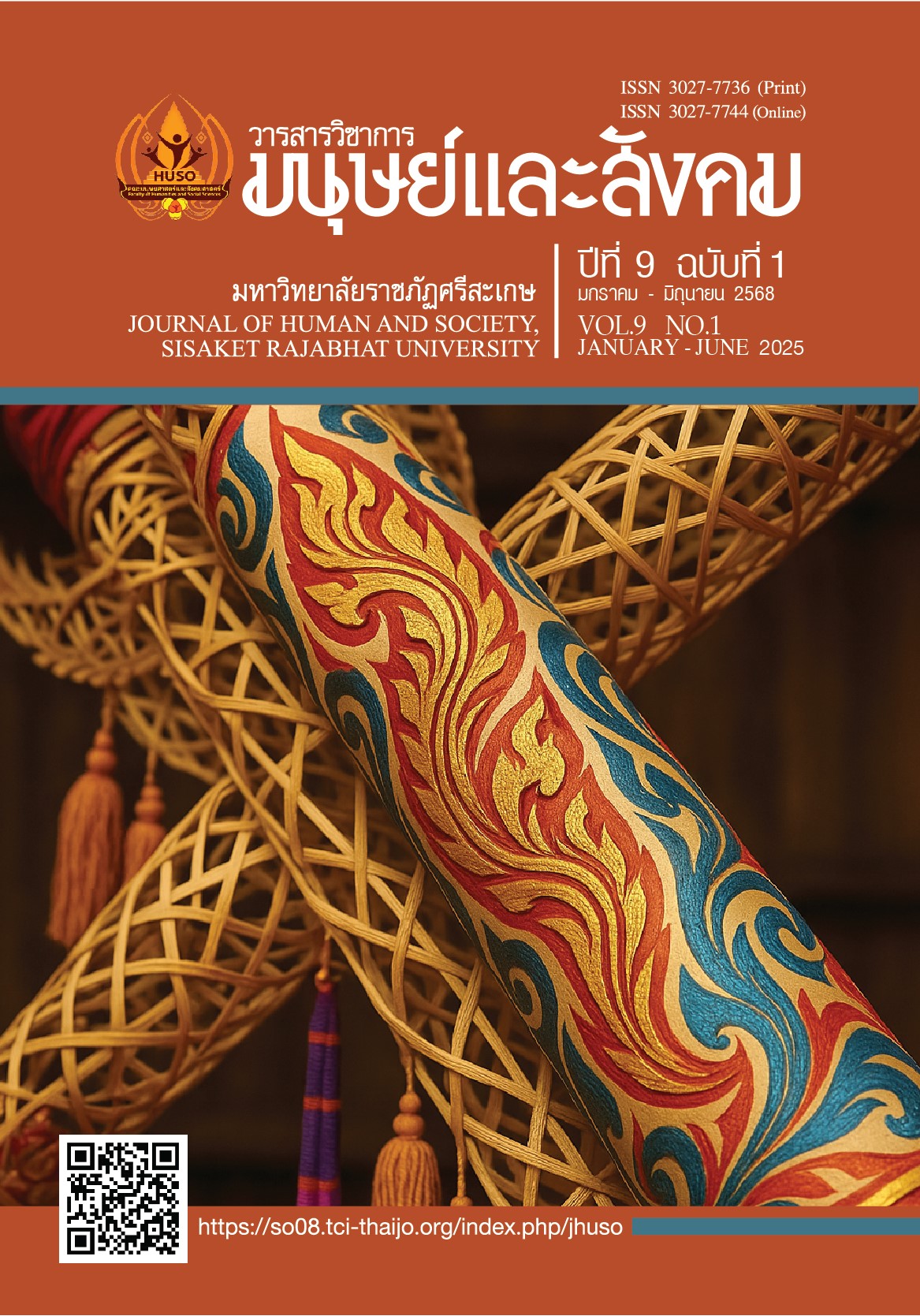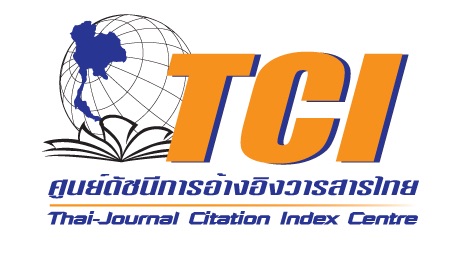The Development of Instructors in Organizing Japanese Cultural Activities to Promote Students’ Attitudes toward Learning among Japanese Major Students at Sisaket Rajabhat University
Keywords:
Development of Instructors, Japanese Cultural Activities, Attitudes toward Learning JapaneseAbstract
The objectives of this research were: 1) to explore the use of Japanese cultural activities in promoting positive attitudes toward learning the Japanese language among Japanese language students and 2) to develop instructional activities for educators that align with the needs of Japanese language students at Sisaket Rajabhat University, focusing on incorporating Japanese cultural elements into the teaching and learning process. The study utilized data from questionnaires distributed to a purposive sample of 14 Japanese language students from the Faculty of Humanities and Social Sciences, Sisaket Rajabhat University. It utilized a set of four Japanese cultural activity modules which included: 1) Japanese lunch boxes お弁当 (obento) 2) Japanese tea ceremony 茶道(chadou)
3) Japanese paper folding 折り紙 (origami) 4) Japanese calligraphy 書道 (shodo) and a questionnaire was administered to collect information concerning the students’ attitudes towards learning the Japanese language. Moreover, post-learning assessments were conducted by the instructors. The data was analyzed using measures such as mean, frequency, percentages, t-tests, and standard deviation. Additionally, the post-learning assessment data from the instructors was employed to provide descriptive and inferential summaries.
The study revealed that before engaging in Japanese cultural activities, the students exhibited significantly improved attitudes toward the Japanese language at a moderate level, (X = 2.49). Furthermore, after engaging in Japanese cultural activities, the students exhibited significantly improved attitudes towards the Japanese language at a moderate level, a high level, (X = 3.66). This indicates that before and after engaging in Japanese cultural activities, there was a statistically significant difference in the students' attitudes toward learning Japanese at the 0.05 level. And then when instructors integrate Japanese cultural activities into the classroom, students exhibit interest and enthusiasm, while also learning traditional Japanese culture and adapting it to align with contemporary contexts.
References
บุญชม ศรีสะอาด. (2545). การวิจัยเบื้องต้น (พิมพ์ครั้งที่ 7). สุวีริยาสาส์น.
มยุรี สุขวิวัตน์. (2554). แนวคิดในการปฎิรูประบบการเรียนการสอนภาษาต่างประเทศในมหาวิทยาลัย. วารสารภาษาปริทัศน์, (26), 65-70. https://www.culi.chula.ac.th/Images/asset/pasaa_paritat_journal/file-26-163-m5z3jd134909.pdf
วิไลรัตน์ ทาโส. (2555). การใช้กิจกรรมทางวัฒนธรรมเพื่อส่งเสริมเจตคติที่มีต่อการเรียนภาษาญี่ปุ่นของนักเรียนมัธยมศึกษาตอนปลาย. มหาวิทยาลัยเชียงใหม่.
อำนาจ ขาวเครือม่วง. (2554). การพัฒนาแบบฝึกทักษะภาษาญี่ปุ่นพื้นฐานสำหรับกิจกรรมชุมนุมภาษาและวัฒนธรรมญี่ปุ่น ชั้นมัธยมศึกษาตอนต้น โรงเรียนมัธยมสาธิตวัดพระศรีมหาธาตุ. มหาวิทยาลัยราชภัฏพระนคร.
Edward D.A., Rebecca M. V. (1997). Classroom Techniques: Foreign Languages and English as a Second Language. Harcourt .Brace Jovanovich.
The Japan Foundation. (2021). 2021Results of the Annual Survey on Japanese Language Education Institutions. https://www.jpf.go.jp/j/project/japanese/survey/result/dl/survey202 1/s_east_asia.pdf
Yozo, O. Koichi, N. & Izumi, Y. (2003). 『Humanism in Japanese Language Education』. Bonjinsha.
Downloads
Published
How to Cite
Issue
Section
License
Copyright (c) 2025 Journal of Human and Society, Sisaket Rajabhat University

This work is licensed under a Creative Commons Attribution-NonCommercial-NoDerivatives 4.0 International License.







